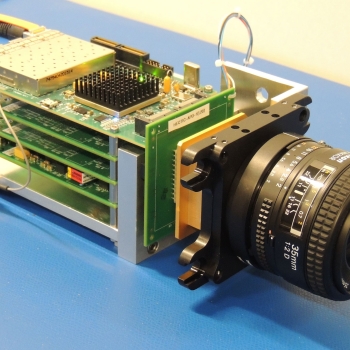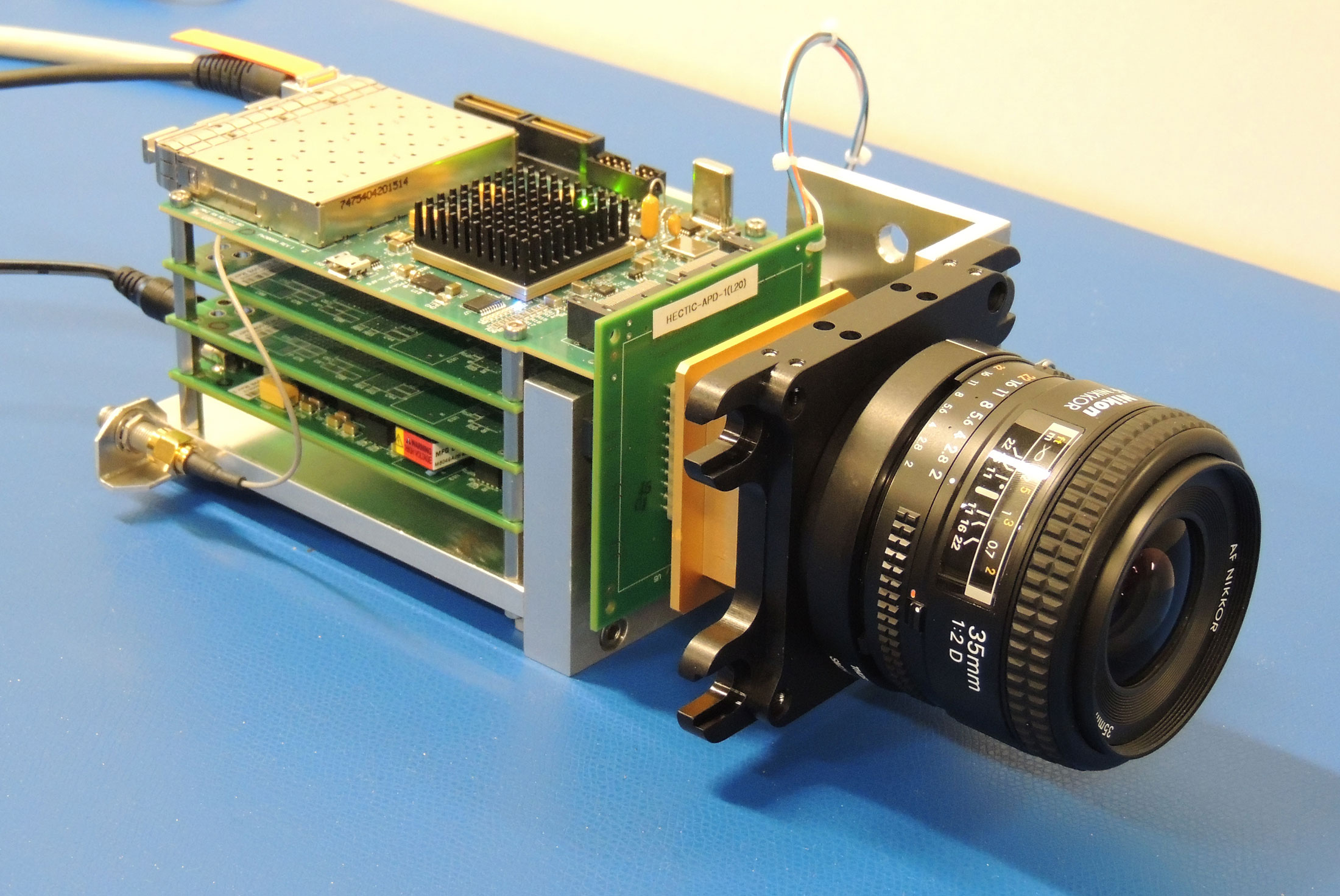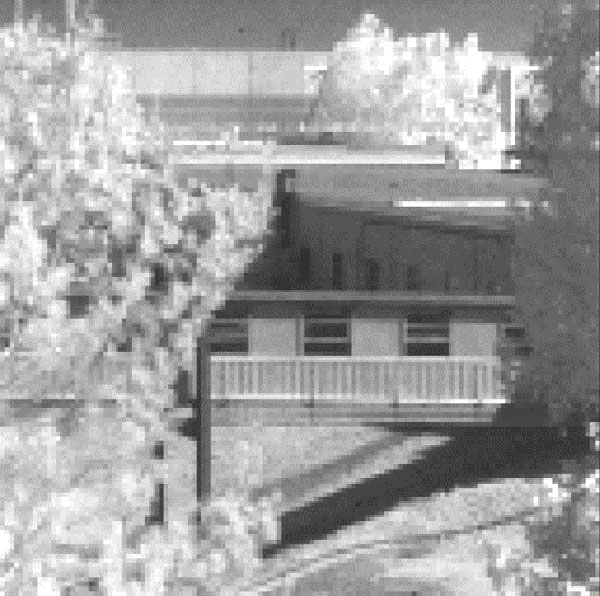Dual-Mode Imaging Receiver

This single-photon-sensitive receiver is unique in that it simultaneously supports optical communications from multiple spatially separated users while producing high-frame-rate context imagery of the scene in the field of view. The capability for each pixel/detector to act as either a communication receiver or an imager is enabled by a custom readout chip bonded to an array of single-photon detectors. This technology provides rapid identification, on-focal-plane tracking, and decoding of multiple optical communicators through a single lens.

Researchers at Lincoln Laboratory developed the Dual-Mode Imaging Receiver to make low-power, free-space optical communication available in a size, weight, power, and cost–constrained package. This objective is achieved by reducing or eliminating the need for a gimbal to achieve precision beam pointing; by providing automatic on-chip detection, tracking, and demodulation of communication signals; and by enabling multiple, spatially separated multi-Mbps (megabits per second) communication links to be supported by a single receiver. Because the single-photon-sensitive detector produces an unambiguous digital pulse for each detected photon, there is no read noise. The speed and timing precision of the photon-detection circuitry enables multi-Mbps data rates to be supported for each of up to 10 simultaneous communication links within the field of view.
Imaging Capability

The system has a 2D array of detectors, much like in a digital camera; however, unlike a conventional camera, these detectors are single-photon-sensitive and produce a digital pulse in response to an individual photon impinging on a pixel. To form an image, the individual photon detections (digital pulses) are counted in each pixel over a period of time (frame) sufficient to provide adequate image intensity values, with image frame rates as high as 8,000 frames per second.
Benefits
- Single photon detection enables low-light imaging and low-power optical communication links
- A 256 × 256 focal plane supports a wide field of view, thereby relaxing or eliminating the need for precision gimbals to acquire and track communicators
- High-pass temporal filters in each pixel suppress background clutter, enabling detection and acquisition of pop-up communicators in a fraction of a second
Additional Resources
U.S. Patent 10,581,521
More Information
J. Frechette et al., "Readout Circuitry for Continuous High-Rate Photon Detection with Arrays of InP Geiger-Mode Avalanche Photodiodes," Proceedings of SPIE 8375, Advanced Photon Counting Techniques VI, 22 May 2012.
2019 R&D 100 Award winner